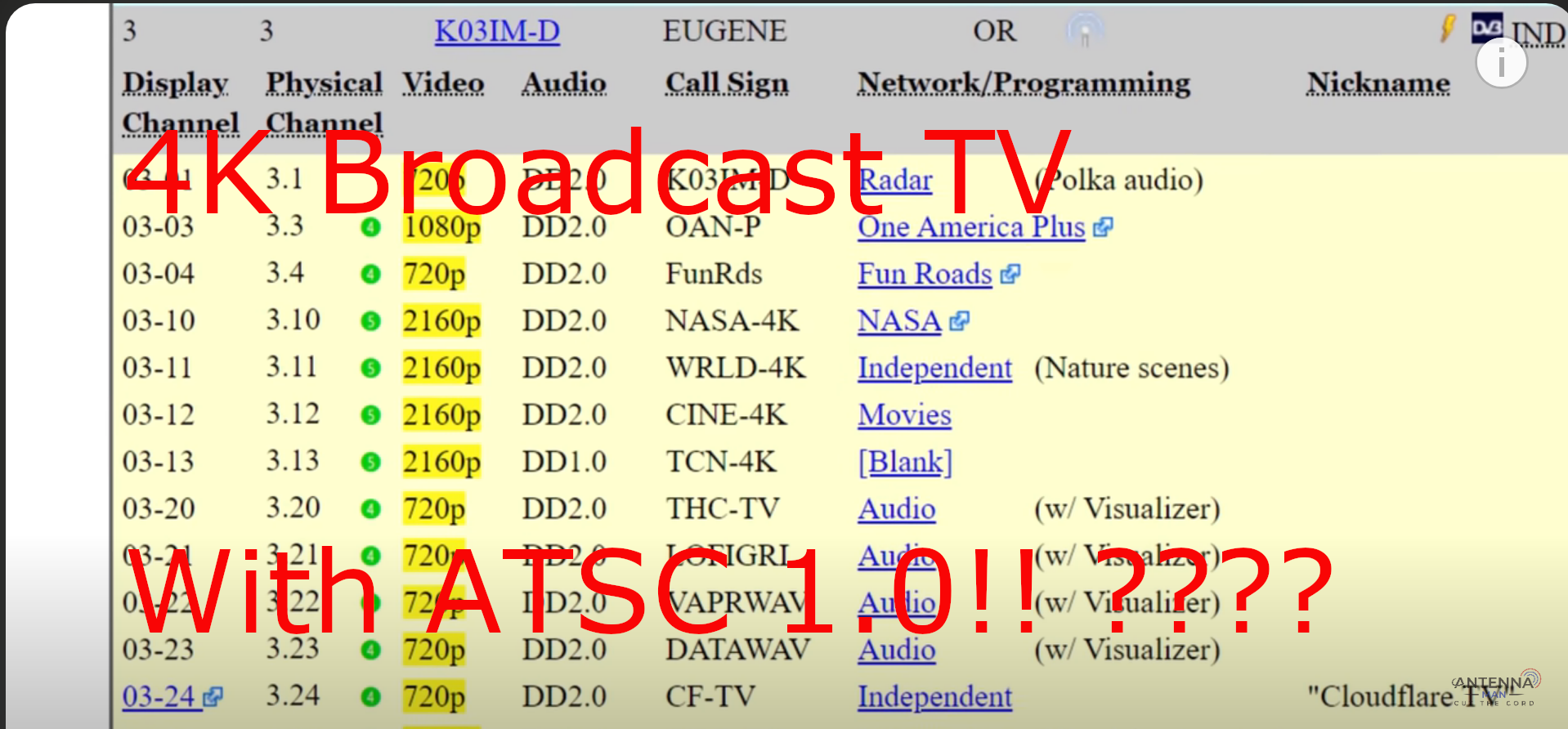Broadcasting 4k TV over ATSC 1.0 -- How??

What if I told you that UltraHD could be broadcast over ATSC 1.0? Sounds implausible, right? After all, we're talking about cramming HEVC-encoded 4K video into a 19.3 Mbps channel originally designed for MPEG-2 over thirty years ago. What if we exploit every trick in the book—specialized rate control, transport stream shaping, GOP tuning, and deep multiplexer hacks—to make it happen? In this talk, we’ll explore the brutal constraints laid out in ATSC 1.0, why off-the-shelf solutions don’t quite cut it, and how open-source tools and custom integrations can push the limits of legacy broadcast infrastructure. If you think modern codecs, real-time and non-real-time encoding, and practical broadcast engineering don't mix, this session might just change your mind.
Date and Time
Location
Hosts
Registration
- Date: 25 Feb 2025
- Time: 05:30 PM to 07:00 PM
- All times are (UTC-06:00) Central Time (US & Canada)
-
 Add Event to Calendar
Add Event to Calendar
- Madison public Library Central Branch
- 201 W Mifflin St
- Madison, Wisconsin
- United States 53703
- Room Number: 3rd Floor Conference Room
- Starts 15 February 2025 12:00 AM
- Ends 25 February 2025 12:00 AM
- All times are (UTC-06:00) Central Time (US & Canada)
- No Admission Charge
Speakers
Tony Kapela
4K Broadcast Over the Air With ATSC-1.0
Anton Kapela is a broadcast and network systems engineer with deep expertise in real-time media encoding, transport stream processing, and ultra-low-latency networking. He has built and optimized long-haul microwave networks for high-frequency trading, developed cellular and mobile edge networking solutions as CTO of EdgeMicro, and now pushes the limits of legacy broadcast technology at Channel 3 (K03IM-D). This talk focuses on practical implementations of UltraHD transmission over ATSC 1.0, leveraging custom-built encoding pipelines, transport stream multiplexing, and software-defined broadcast solutions.
Biography:
Channel 3, Eugene - K03IM-D
Lead Engineer & Operator | 2020 - Present
Engineered and deployed a working UltraHD (4K) over-the-air broadcast using ATSC 1.0, proving feasibility with HEVC and advanced transport stream techniques.
Designed and tested optimized encoding workflows using FFmpeg, CUDA/NVENC, and custom-built GPU-based transcoding pipelines.
Developed robust, resilient multiplexing strategies with adaptive bitrate handling to ensure stable broadcast signal integrity.
Integrated open-source and commercial tools, including D2D Technologies multiplexers, for enhanced PSIP and transport stream reliability.
EdgeMicro
CTO & Co-Founder | 2017 - 2020
Designed and implemented edge data center architectures for high-performance, low-latency content delivery.
Worked on network coding and multipath TCP applications in the context of mobile and edge networking. Developed novel strategies for integrating global Internet routing with ultra-low-latency mobile networking solutions.
Low-Latency Microwave Networks (Private HFT Client)
Network Architect | 2011 - 2017
Co-engineered and deployed the fastest microwave relay network between Chicago and New York City for high-frequency trading firms. Focused on extreme low-latency data transmission, optimizing signal paths and refining hardware/software integrations for sub-millisecond packet transport. Applied custom FPGA and radio-based solutions to optimize data rates while minimizing jitter and latency.
Technical Expertise
Video & Broadcast Engineering: HEVC, AVC, ATSC 1.0, MPEG-2 TS, PSIP, DVB-C
Low-Latency & High-Performance Networking: Microwave, Multipath TCP, Network Coding, Edge Computing,
Media Encoding & Processing: FFmpeg, NVENC, x265, VBR optimization, real-time transcoding
Systems & Infrastructure: Linux, GPU acceleration, high-performance computing clusters, custom hardware integration
Patents & Research
US Patent: "Data Routing in Communications Systems" – Innovations in integrating global routing with mobile networking.
Ongoing work in ATSC multiplexing, codec optimization for broadcast, and high-efficiency low-bitrate UHD streaming.
Speaking Engagements
IEEE Society: Technical Latency Issues, Network Protocols & Encoding
Wisconsin Broadcasters Clinic 2024: UltraHD over ATSC 1.0 – What’s Possible?
Various industry panels on network optimization, low-latency media transport, and forward error correction.
Education
Background spanning Electrical Engineering, Physics, and Applied Computer Science; 2003 BS CS & CNT
Email:
Agenda
5:30 PM -- Pizza and soda for the in-person meeting.
5:50 PM -- Introductory Remarks
6:00 PM -- Technical Talk
6:50 PM -- Questions from on-line and in-person
7:15 PM -- Adjourn
NOTE: The Virtual Presentation will be via Zoom with the link sent to all registered attendees.
PLEASE ENTER a CORRECT Email Address to receive the Link.
